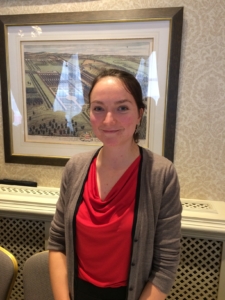What a fascinating talk we had from Tatiana Solovieva on Monday 9 October!
Tatiana is a developmental biologist, now studying for her PhD at UCL. Her speciality is studying the role of ‘organisers’ in early foetal development.
Tatiana’s interest in biology started early, on walks and through her beautiful drawings of wildlife. Through that hobby she began to pay attention to the features and diversity of the animals she was drawing. Leonardo da Vinci studied musculature and skeletal structures in order to be able to draw more realistic pictures of humans, and similarly Tatiana’s artistic hobby led to her interest in how creatures grow.
The human body has 200 different cell types in the body, organised into organs, the nervous system and musculature. Yet all these different and complex cell types form from a single fertilised cell. This, Tatiana told us, is because every single cell contains all the information that it needs to become a fully formed organism.
Development of an animal is robust and complicated. For example arms and legs form to be the same length even though they develop separately and without communication during development. Mistakes are rarely made. In order to understand those mistakes that are made, such as cleft lip palate and spina bifida, developmental biologists like Tatiana are conducting research to understand how embryos develop, using signalling regions in an embryo called organisers.
Organisers are regions in the embryo which induce and pattern surrounding tissue during development. For example one organiser might develop its surrounding tissue into a limb, or a wing. Developmental biologists use grafting techniques to identify what an organiser does. This has been complete trial and error – an organiser is grafted and only once it starts to develop the surrounding tissue does it become clear what that organiser does, and when in the development stage it does its job.
Tatiana explained that her particular interest was to discover whether an organiser can turn a normal cell into a stem cell.
We left our lunchtime lecture understanding much more than we had ever realised, about how developmental biology can help us to start to understand the different ways that organisms can develop and why they develop that way. As Tatiana put it, it is a way of getting deeper understanding into the animal kingdom’s weird and wonderful diversity.

